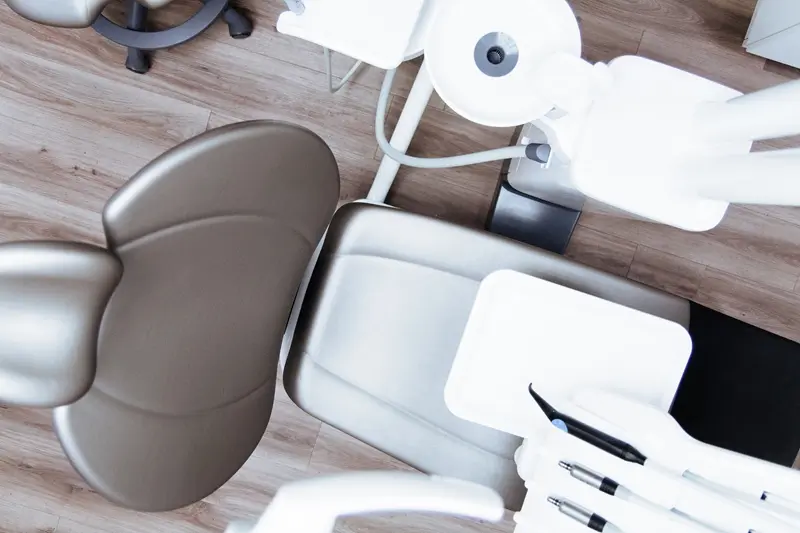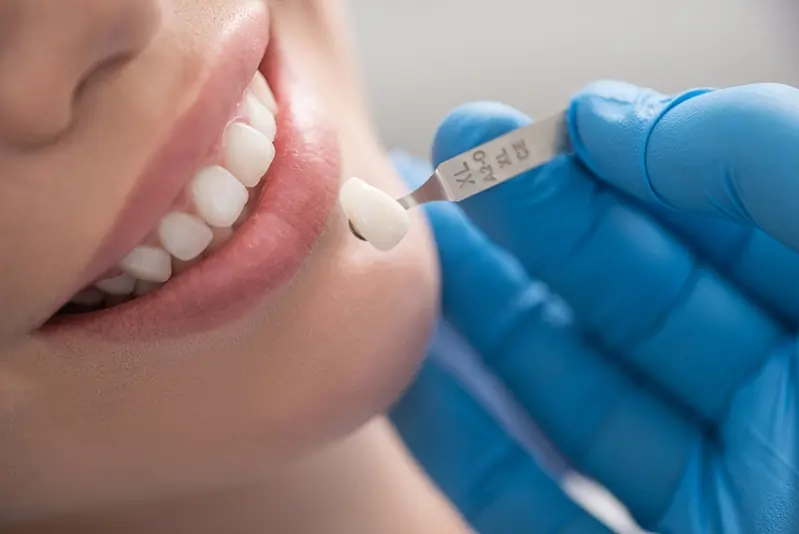A cracked, chipped or otherwise damaged tooth definitely needs professional attention. However, given you may not even know you have a cracked or chipped tooth until you see your dentist at a routine checkup, emergency dental care isn’t always required. How do you know what type of treatment you need?
What is a cracked tooth?
Cracked or chipped teeth are often the result of an accident or injury. Sports players, for example, may find they’re more susceptible to mouth-related injuries, or the teeth may bear the brunt of a trip or fall. Even biting down on something that’s a little too hard can cause a problem. Some people grind their teeth during their sleep, which can cause damage over time, while a very large filling can also weaken the tooth and cause eventual damage.
How bigger cracks are treated depends on whether or not they extend as far as the gum.
Craze lines: These are where very small but common cracks occur in the outer layer of the tooth, known as the enamel. Craze lines can go undetected by the patient because they don’t always cause discomfort. As they are so often painless, they rarely require treatment at all.
Larger cracks: How bigger cracks are treated depends on whether or not they extend as far as the gum and qualify as a split tooth. Where the crack does not reach the bottom of the tooth, your dentist may be able to repair it and this is often where a root canal treatment is performed.
However, if the crack does reach the gum line, or travels beneath, the tooth is unlikely to be repairable and may need extracting. In cases where the crack extends from the root upwards an extraction is also likely – this type of damage doesn’t always cause significant pain but can encourage infection.
Finally a tooth that is so severely cracked that it is split in two may be partially saved, depending on the position and extent of the damage.
Fractured or cracked cusp: On the chewing surface of the tooth, the bumps are referred to as cusps. Occasionally, you might find a cusp chips or breaks off, which can in turn cause further breakage. A fractured cusp may or may not cause much pain, and treatment varies according to severity but may involve a filling or crown.
 Depending on the severity of the damage, a root canal or extraction may be necessary.
Depending on the severity of the damage, a root canal or extraction may be necessary.Repairing a cracked or broken tooth
What level of treatment you receive comes down to the type of damage sustained.
A small crack or chip in the tooth
A small crack or chip can often be repaired within one appointment, using a dental filling or bonding. Fillings are more commonly used for teeth at the back of the mouth, where aestethic appearances are not so important.
If the damage is to a tooth at the front of the mouth, the dentist may use a tooth-coloured composite resin in a procedure called bonding. Using an adhesive material, the resin is applied to the surface of the tooth, and hardened under ultra-violet light. As the dentist is able to shape the resin to fit the patient’s tooth, bonding usually results in a natural-looking finish.
Significant breaks
Where a larger portion of the tooth has broken or chipped away, your dentist may opt to give you a dental crown. Made from a variety of materials, such as metal, ceramic or porcelain, a dental crown is a replacement for the portion of the tooth that sits above the gum line. It may replace an entire tooth, as is common when a dental implant is inserted or a tooth is knocked out entirely. Alternatively, a crown may be fitted to sit over what remains of the original tooth to protect it from further damage. If this is the case, the dentist will file down the natural tooth so that it’s ready to receive the crown.
Dental crowns look very much like natural teeth, and so are an aesthetically pleasing option where there has been significant damage. There are usually two appointments required to fit a dental crown – the first involves taking a mould of the affected tooth to be sent away to a dental lab, while the second visit is when you’ll have the crown permanently fitted.
Tooth decay and root canal treatment
Even if you are not experiencing any pain, a cracked or broken tooth must be repaired in order to prevent further injury or infection. Extensive damage may expose the inner region of the tooth, referred to as the pulp. If this happens, bacteria may be able to enter and infect the tooth, causing decay. In this case, you may require a root canal treatment in order to remove the infected pulp and re-seal the tooth.
In most cases, a tooth treated with a root canal is covered by a dental crown to protect it.
Extraction
If a tooth cannot be saved, your dentist may decide to extract it. Where the removal is relatively straight forward, the dentist loosens the tooth with a tool known as an elevator and then uses forceps to remove the tooth altogether.
In more complex cases, it might be necessary to cut into the gum, or remove some of the bone surrounding the tooth. Local anaesthetic is used to ensure the patient doesn’t feel any pain. Occasionally, a dentist will opt to use general anaesthetic.
 There are lots of options for treating a cracked or broken tooth.
There are lots of options for treating a cracked or broken tooth.Dealing with an injury at home
While you’re waiting to see the dentist, there are a number of things you can do to minimise any discomfort.
- Use a cold compress on the same side of the face as the affected tooth, to reduce swelling.
- Keep the area clean by using a warm water mouth wash.
- Try to avoid biting or chewing with the tooth, and don’t participate in any sports or physical activities.
When to seek emergency dental care
There are no hard and fast rules about when a situation requires emergency dental care. However, it’s best to speak to your local dentist as soon as possible so that they can ascertain the seriousness of the problem, even if it doesn’t hurt.
If you’re concerned you may have a broken or cracked tooth, or if you simply want to organise a routine checkup, get in touch with the team at City Dentists today. Call 04 978 4964 or book an appointment online.
